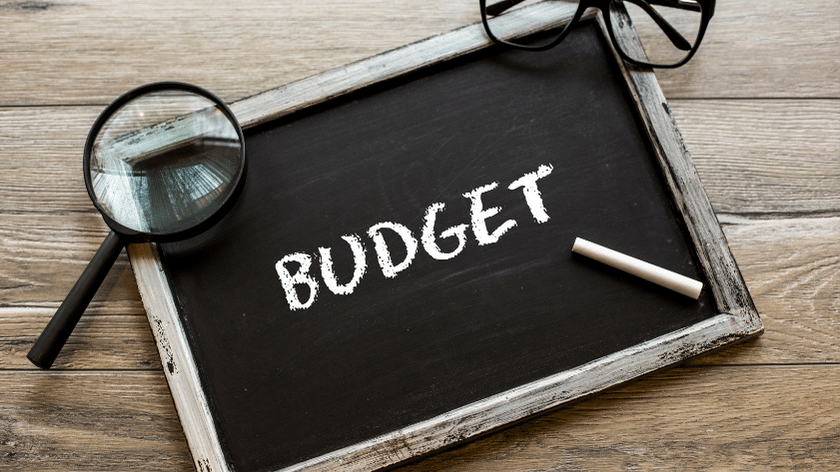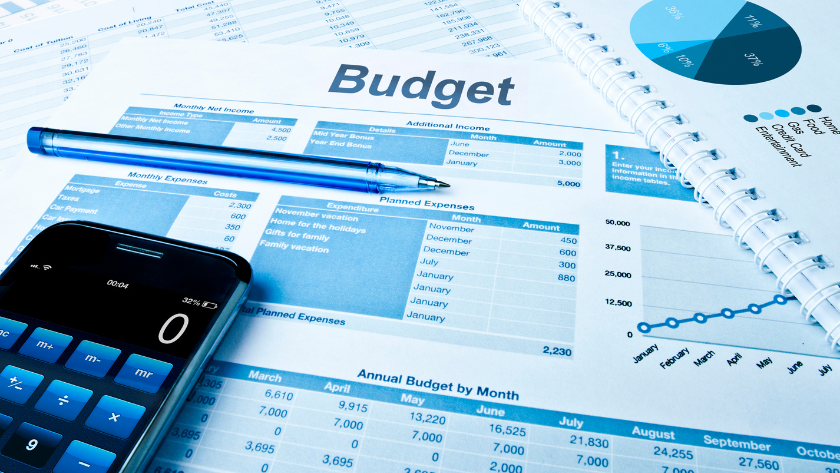What is a budget? A budget is a plan for your money. It designates each dollar to a future goal in mind. It ensures that you have the money set aside for the experiences, bills, and expenses that you need to live the lifestyle you’d like without spending more money than you make. One of the biggest keys to wealth building is the simple principle to spend less than you make. This allows you to stack money into investments in which you earn a return (interest) on your money. Budgeting is absolutely a key ingredient to paying off debt and building wealth, two things that do not happen without intentionality and a plan, like a budget.
The Elements of a Budget:
- Know your income – Your INFLOW
- Determine how much you want or are able to spend by category – Your GOAL
- The actual amount of money you have available to spend – Your BUDGET
- How much money you are actually spending during the month – Your ACTIVITY
- Sinking Funds vs. Monthly Expenses
Know your income – Your INFLOW
In order to know how much you have available to allocate to different categories, you need to know how much income you have coming in. This can either be a very simple task or a very difficult task depending on your situation. With a salaried position in which you get a paycheck on a regular cadence, you can simply determine via your pay stubs. With a less steady income, we recommend you track your monthly income and base your budget based on the lowest earning monthly income. This will protect you from unexpected drops in income and prevent you from depending on that income for expenses you need to survive, like food, shelter, clothing, and transportation. In the months you end up earning more, you can utilize this money to pay off debt, invest, or set aside for a longer term goal like a vacation fund or holiday spending.
Determine how much you want or are able to spend by category – Your GOAL
At the beginning of the month, you will set a monetary goal for each category. This designates how much money you have to spend during that month. Here you can be as detailed as you would like in terms of your division of categories. Common categories include shelter (mortgage or rent), utilities, grocery, clothing, entertainment, personal care items, daycare, fuel, insurance, vacation, holidays, charity/giving, and investing or saving. Any one of these categories can be broken down even further. Breaking the categories down into more detail will allow you to be more accurate and give you more visibility to the types of expenses within each category, keeping you more organized. Sometimes this is easier. Sometimes, however, it could end up taking more time to manage separate lines in your budget. You decide what level of detail fits with your style. In Ploutos Budget, we create a GOAL category that allows you to have a starting point for each monthly budget. Your GOAL is what you want to be able to spend on a particular category month. Your GOAL should never exceed your projected INFLOW for the month. Your GOAL is different from BUDGET, which we get to below.
The actual amount of money you have available to spend – Your BUDGET
As your monthly income comes in, you’re able to allocate it to the various categories you set up. If you get paid 2 times a month, you may not have all the money available to spend compared to the monthly goals you set at the beginning of the month. For example, if you have $4,000 a month in your monthly GOAL, but you get paid $2,000 on the 1st of the month and $2,000 on the 15th, you will ONLY be able to spend $2,000 for the first part of the month and thus your BUDGET amount for that month will not fully fund to your GOAL for the month. This makes sure you do not over spend the money you have coming in and avoids you tapping into debt to fund your life… a slippery slope to overspending and going backwards in building wealth. Once you get your second paycheck on the 15th, you should be able to fully fund all the categories to your designated GOAL amount.
How much money you are actually spending during the month – Your ACTIVITY
Throughout the month, you should have a way to track your actual spending progress. This way, if it is mid-month, and you are about to head to the grocery store or doing your meal planning, you can know exactly how much money is left for that category to spend for the month compared to what has been allocated in your BUDGET. Ploutos Budget makes this process a piece of cake by linking your accounts to the application. In real time, you can see what you spend and are able to allocate it to the proper category to be able to see what you have left to spend for the month.
Sinking Funds vs. Monthly Expenses
We’d be remiss if we didn’t discuss the difference between Sinking Fund and Monthly Expenses. When you build your categories in your budget, each category is either an expense that is a recurring expense that happens each month. An example of monthly expenses include groceries, mortgage, or utility bills. A sinking fund is a longer term expense that occurs on a less frequent basis. A good example of a sinking fund is a Vacation Fund or a Household Repairs Fund. These are funds you will not utilize each month but you should designate a portion of your monthly income to these funds each month to assure that when you do need to spend for these categories, you have the money available. Both types of categories are crucial in avoiding debt and paying interest.
When you first start budgeting, you are not going to get it right the first time, or even the first couple of months. You may start off and completely underestimate how much money you need for groceries each month. Give yourself time and grace to practice budgeting. Over time, your budget can help you get a sense of the typical amounts you need for each category and you will become more and more accurate. With a tool like Ploutos Budget that make it easy to track expenses in real time and make adjustments by category while in the same month, you can easily get back on track by adjusting your spending in categories you underspend or overspend before you get to the end of the month and discover that you have spent more than you make.
Remember, a budget is a plan for your money. It helps you stay organized and intentional in your debt pay-off or wealth building journey. Instead of wondering where your money went each month, a budget plans ahead and provides clarity and peace of mind knowing how much money you have assigned to each category.





